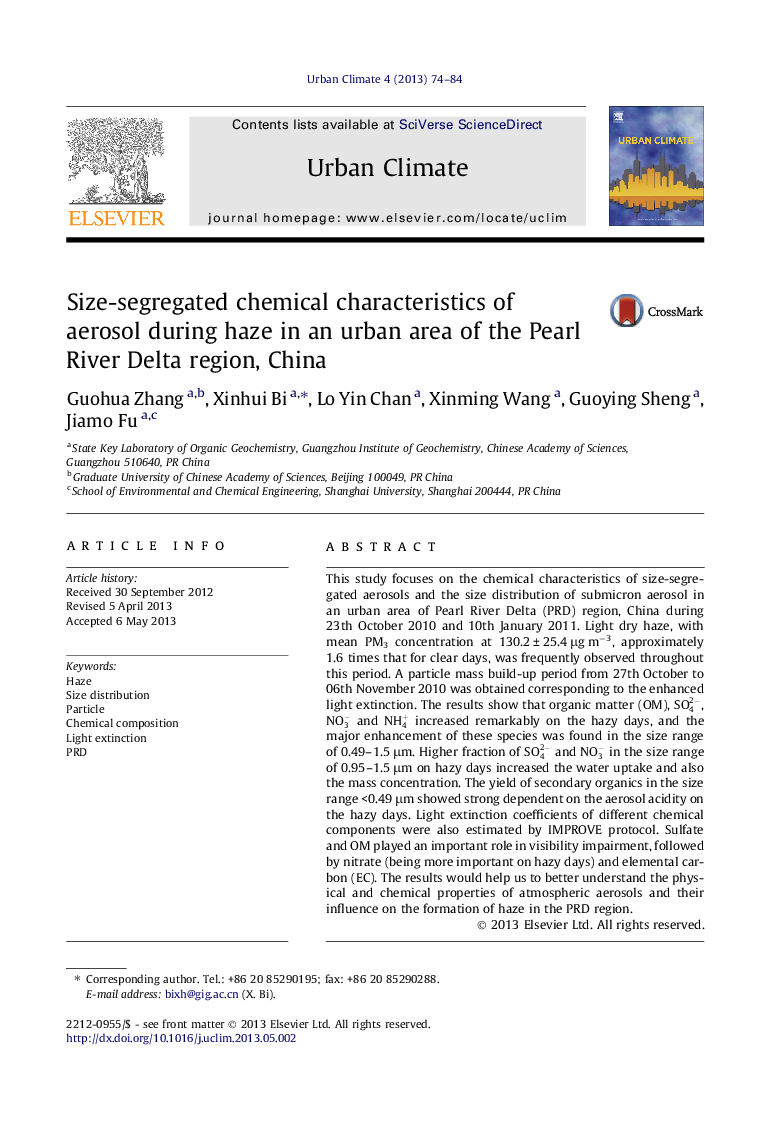| Article ID | Journal | Published Year | Pages | File Type |
|---|---|---|---|---|
| 143804 | Urban Climate | 2013 | 11 Pages |
This study focuses on the chemical characteristics of size-segregated aerosols and the size distribution of submicron aerosol in an urban area of Pearl River Delta (PRD) region, China during 23th October 2010 and 10th January 2011. Light dry haze, with mean PM3 concentration at 130.2 ± 25.4 μg m−3, approximately 1.6 times that for clear days, was frequently observed throughout this period. A particle mass build-up period from 27th October to 06th November 2010 was obtained corresponding to the enhanced light extinction. The results show that organic matter (OM), SO42-, NO3- and NH4+ increased remarkably on the hazy days, and the major enhancement of these species was found in the size range of 0.49–1.5 μm. Higher fraction of SO42- and NO3- in the size range of 0.95–1.5 μm on hazy days increased the water uptake and also the mass concentration. The yield of secondary organics in the size range <0.49 μm showed strong dependent on the aerosol acidity on the hazy days. Light extinction coefficients of different chemical components were also estimated by IMPROVE protocol. Sulfate and OM played an important role in visibility impairment, followed by nitrate (being more important on hazy days) and elemental carbon (EC). The results would help us to better understand the physical and chemical properties of atmospheric aerosols and their influence on the formation of haze in the PRD region.
